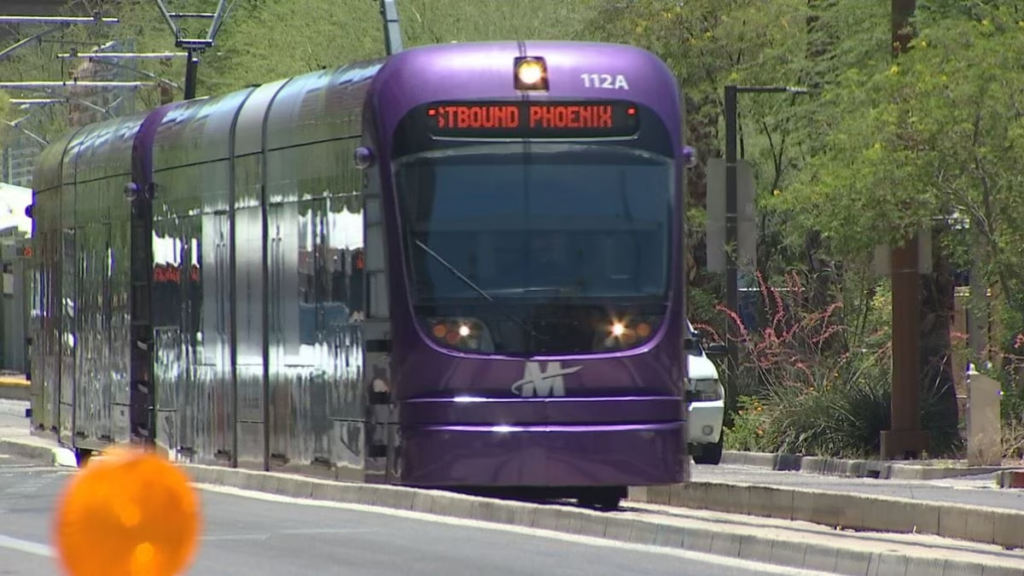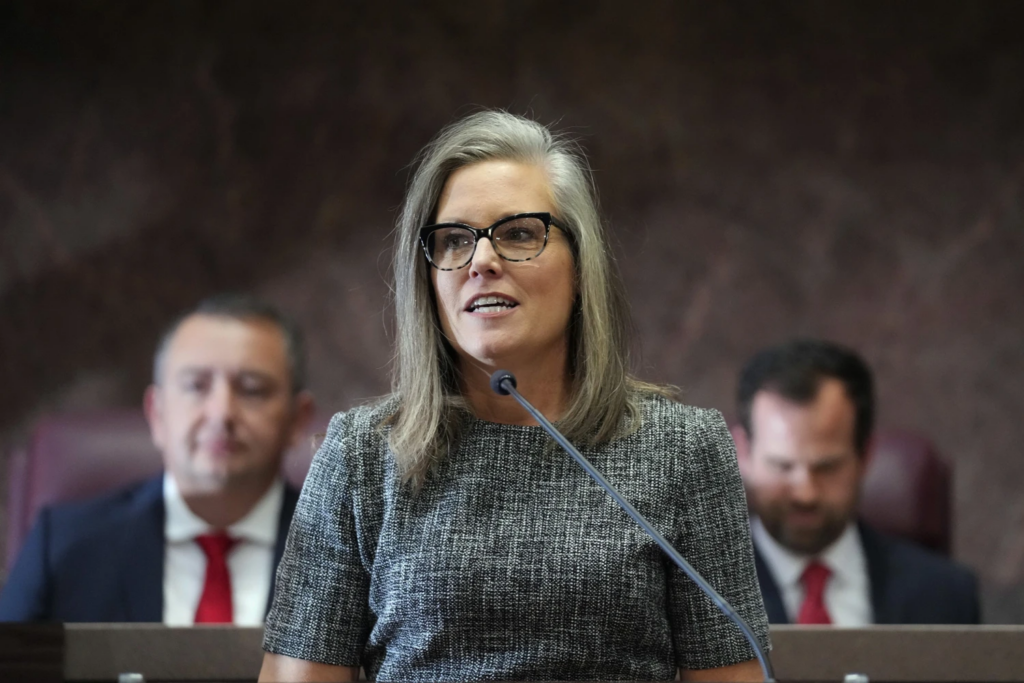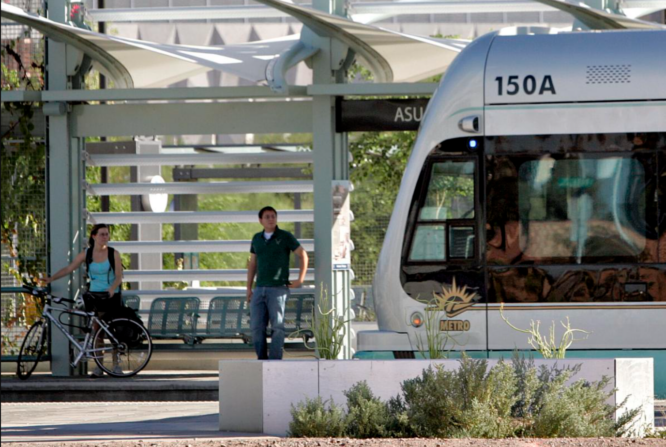Republican lawmakers adopted their own Maricopa County transportation financing package late Tuesday, almost daring Democratic Gov. Katie Hobbs to veto it.
She stated her intention immediately.
Hobbs called for “a compromise that is supported by a bipartisan majority in both chambers, business and labor leaders, and Maricopa County cities” in a statement published following the vote. She called GOP leaders’ disregarding that and embracing their own plan “partisan games.”
However, legislators won’t return until July 31. Despite Hobbs’ assertion of bipartisan support, every Republican in the House and Senate voted for the proposal she opposes.
A veto puts the county transportation tax and its extension to voters in a game of political chicken.
Peoria Republican Rep. David Livingston stated, “This is going to be the only bill that passes this session” on tax extension. Voters will only vote on this measure.
He added a Hobbs veto would prevent Maricopa County taxpayers from extending the levy for 20 years.
If so, the tax will expire in 2025. Over the following two decades, it would fail to generate $20 billion and fund all its initiatives.

Hobbs insists there are enough legislative votes for her Maricopa Association of Governments agenda. She suggested GOP leaders vote on it “to stop holding our state’s economic potential hostage.”
GOP wants light rail vote separately.
Plans varied greatly.
The GOP plan reduces the sales tax by 0.495 cents.
The Republican plan requires Maricopa County residents to vote twice. If elected, the 0.43-cent levy would fund highways and roads.
Voters must approve a 0.065-cent levy to fund new light rail, trolley, or commuter rail lines. If voters rejected the second ballot issue, cities would have to pay for additional train lines.
House Speaker Ben Toma said the Republican plan allows Hobbs and the Maricopa Association of Governments, made up of local elected leaders, to prolong the sales tax until 2045.
He said MAG isn’t everything. “This is an opportunity for us to actually move something forward that gives voters a real choice in what these projects are,” Toma said.
“Some seem to be concerned, shall we say, about the fact that it’s split into two questions is very telling to me,” the Peoria Republican added. They may worry that light rail won’t pass while the other bucket does.

Voters approved the latest tax extension in 2005, including light rail funds.
Light rail—benefit or harm?
Republican Rep. Barbara Parker said her hometown of Mesa, where the light rail passes, implies citizens have seen enough.
“The light rail destroyed our historic Main Street and downtown Mesa,” she added.
She also doubts commuters utilize it. “We’re funding a loser,” Parker added. “In our town, it’s just a moving urinal.”
Mesa Democrat Rep. Lorena Austin disagreed.
Austin called the light rail “transformative.” Downtown Mesa’s shopping is thriving, especially in the previous year. Businesses aren’t coming quickly enough. It’s all about public transit.
Senate President Warren Petersen, R-Gilbert, said the GOP plan would not exclude light rail extensions if voters don’t approve separate money. He claimed it means Maricopa County’s sales tax payers won’t pay for light rail.
“If cities want light rail,” Petersen stated. “They can fund and do it.”
Another clause demonstrates light rail hostility. The law would prevent construction of a proposed expansion from downtown Phoenix to the state Capitol, funded for by the present tax.
J.D. Mesnard, R-Chandler, called it a needless loop.

That’s not the plan. The plan is to split the single line into two: a north-south route from the old Metrocenter Mall in Phoenix to a South Phoenix expansion under development, and an east-west line from Mesa to the Capitol.
Billion-dollar freeway construction
The governor’s plan doesn’t only separate light rail financing.
Hobbs wants 40% of the $20 billion for motorway improvements if she wins and there is one vote on a half-cent extension. Approximately $8 billion.
The GOP plan agreed Tuesday would reserve 53.5% of the 0.43-cent levy in the first question for that. Freeway construction and widening cost $9.2 billion.
Hobbs also requested 40% of the $8 billion levy for transportation. Even if voters accept both Republican ballot proposals, including light rail, the total would be $6.6 billion, or $4.8 billion if they approve only the first.
Senate Minority Leader Mitzi Epstein, D-Tempe, warned colleagues against shortchanging public transit, especially light rail.
In dense places, light rail is the most effective method to convey people, she added. “If we keep thinking everything must be a single driver in a car on a road, we’ll have to pave every speck.”
Sen. John Kavanagh, R-Scottsdale, said Arizona doesn’t have the density of New York, where he’s from, to make mass transportation and rail a viable means to get people out of their automobiles.
Limits interstate speed
In addition to funding for rail improvements, the Republican measure would affect those beyond Maricopa.
Toma inserted wording to limit the minimum speed on all interstate routes in Maricopa, the state’s most populated county, to 65 mph. State highway engineers have installed 55 mph signs on approximately 15 miles of Interstate 17 in Phoenix.
The House speaker defended Republican legislators’ speed limit override.
“It makes highway speeds consistent across the county and keeps up with highway driving,” he added.

